On November 4, 2023, the Communication Plaza’s 25th Anniversary Commemorative Historic Model Demonstration Run was held at Fukuroi Test Course. Typically, this event is limited to members of the restoration team, other affiliated people, and special guest riders invited to take part. But a special collaborative event was planned this time with Revs+—Yamaha Motor Group Internal Web Magazine —and an open call was made for 15 volunteer riders to join in from among Yamaha Motor’s employees. We introduce scenes of the event and some of their impressions from the event.

Preparations for the event at Fukuroi Test Course began before dawn. The 15 historic motorcycles transported to the track by trucks were carefully unloaded by the staff and lined up in their historical order, with the YA-1 in its rightful place at the front. At 8:00 a.m., all the bikes were started to warm up their engines while their brakes, clutches, and so on were checked. Just before the volunteer riders gathered at the course, the bikes were warmed up once again and given one more thorough check to ensure that there were no problems with any of them and that all were safe to ride and operate. The unique exhaust notes of 2-stroke engines echoed through the air accompanied by their signature bluish smoke, and in the same manner, the event staff that had worked hard to prepare for the day’s activities were fired up themselves.
Fukuroi Test Course covers seven times the area of Tokyo Dome (approximately 330,500 m2) and is a historically important facility for Yamaha Motor. It is where Yamaha motorcycles, recreational vehicles, and various other mobility products are developed as well as where many notable machines were created. Many of the volunteer riders attending the event said that it was their first visit to the facility and their eyes wandered the course and its surroundings with great interest.
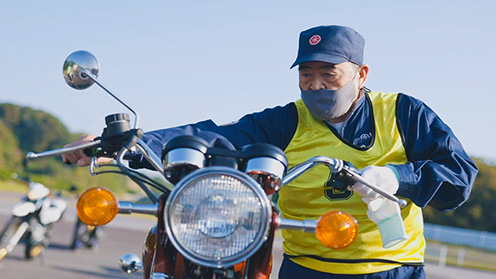
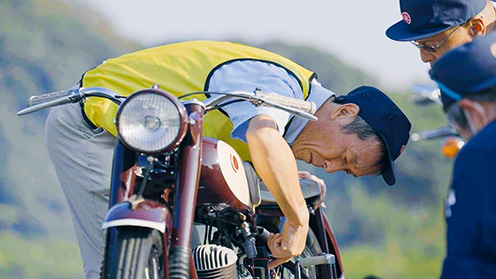

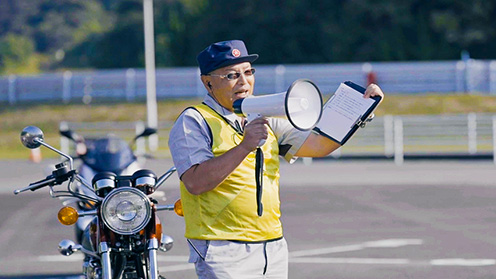
A special course was set up out on the main straight, on which the volunteers would test-ride the machines one at a time. This was the first time that any of them had ridden such valuable historic motorcycles, and at first, their faces could not hide their anxiousness. But as the event got underway and they began turning laps, the nervousness gradually faded and made way for bright smiles. And at some point, when each rider completed their stint and returned to the parking area, they were greeted with warm applause and shouts of “Well done!” by others awaiting their turn. After riding the motorcycles, the volunteers began sharing their impressions with each other, the enthusiastic bike talk naturally bringing them closer as fellow Yamaha employees.
“When I was chosen as a volunteer rider, one of my coworkers in his 50s was very envious,” said Risa Iwakura from the PF Body Engineering Division. In the past, Toru Hamamatsu from the Corporate Quality Assurance Division was in charge of developing accessories for the Serow 250 and SR400, and after riding them again, he flashed a smile and said nostalgically, “I got that unmistakable relief you feel when you return home after a long time away. I hope we someday bring these bikes back again.”

When all the riding sessions were over and the volunteer riders had left, the restoration team members could finally breathe sighs of relief, saying how glad they were that there were no accidents and no one fell or dropped a bike. After praising them for a job well done, one of them smiled grimly and said, “Oh no, we’re not done yet. We still have to return the bikes that we ran today to the Toyooka Technical Center and prepare them for storage again. That’s a lot of work on its own.” After these riding events, the machines are thoroughly cleaned, the fuels and oils drained, and so on. In other words, the successful conclusion of the day’s event does not mean the restoration team’s job is over. It is thanks to their tireless efforts and careful work that the future of the Communication Plaza and its many historic machines are in good hands.

2023 Historic Model Demonstration Run video recap

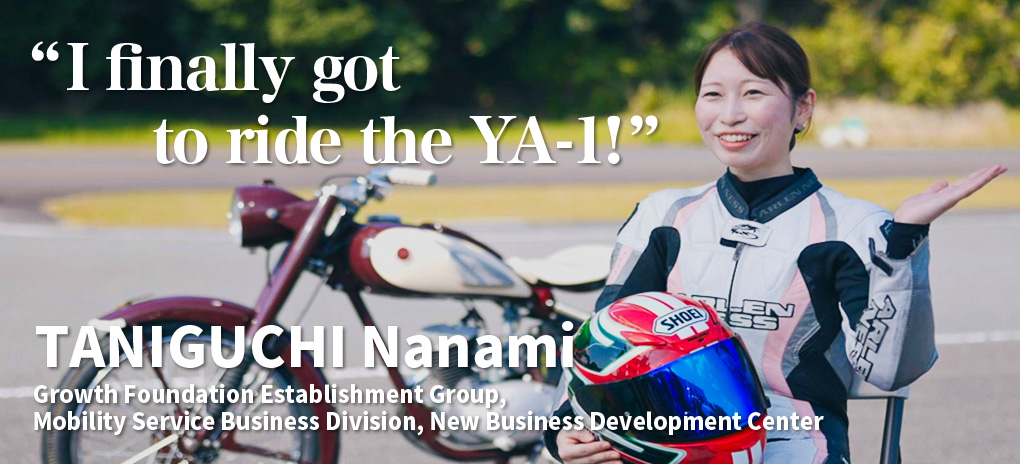
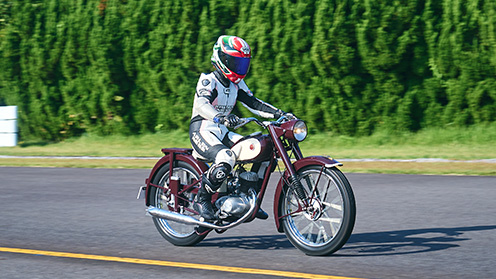
I applied to be a volunteer rider for the Historic Model Demonstration Run because I wanted to try riding the first motorcycle Yamaha Motor ever made, the YA-1. My wish came true and I was able to take it out today, but it was so much fun to ride that it was hard to believe that it was built over 60 years ago! While it wasn’t as fast as a modern bike, I could tell as I was riding it that it must’ve put a smile on the faces of all those who rode it, and that realization made me really happy as well. I also rode the TMAX and it was very powerful. It felt like it was fully capable of handling city streets as well as going touring. While both bikes have very different characters, they were undeniably Yamahas in the way they are both very fun to ride. Being able to see all kinds of historic machines from different eras all in the same place today was a really valuable experience. I was also able to hear my senior coworkers talk about how they used to ride this or that bike when they were younger, and to chat with some of the developers. The event was a great learning experience for me.
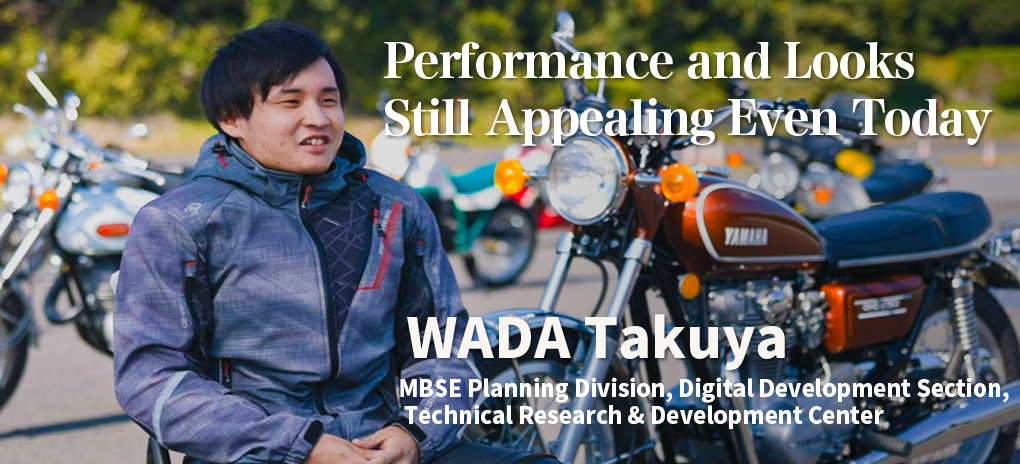
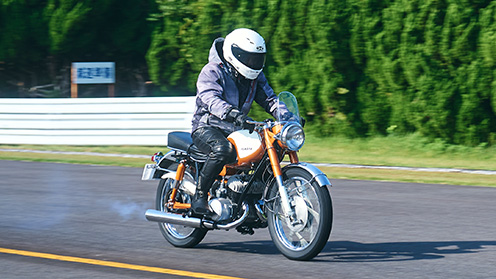
I like classic bikes and usually prefer to ride models from the ‘80s, but other riders often tell me how older bikes have heavy clutch levers, they’re slow, hard to ride, and so on. So, I entered today’s event because I really wanted to try riding bikes from bygone eras that have been painstakingly restored on the inside and out to see what they’re really like. After riding them, I understood that their performance is perfectly fine for modern riding, plus they have such beautiful designs. They’re really attractive motorcycles. What struck me about the TX650 is how its gutsy torque bites into the pavement and the enjoyable pulse from its engine. The YDS-1 was built in the ‘50s, so while its brakes seemed a bit weak, I was surprised at how sporty it felt and I loved how quickly it accelerates. Having the wonderful opportunity to try riding these historic machines made me wonder anew about how we could build such attractive bikes like these today.
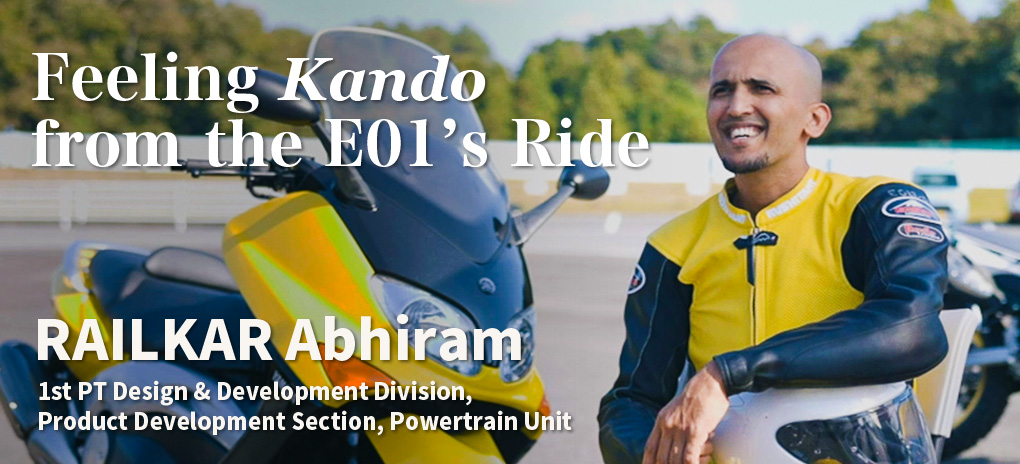

When I saw the TX650 listed on the event notice, it filled me with nostalgia because back in the day, there were many Yamaha motorcycles in India with similar designs. In addition to the classic bikes, I also wanted to ride the E01, so I immediately applied for the event. It was the first time for me to ride an electric bike in that category and it was a really Kando-filled experience! It accelerated so smoothly and had that Yamaha stability. It was just really easy to ride. The YA-1 was in beautiful condition and I was surprised at how it rode just like a normal bike. I actually love to restore bikes myself and I have a couple of old ones at my house, so I think it’s great that the Communication Plaza is restoring and preserving these historic machines in running condition for Yamaha. I wouldn’t mind joining the restoration team myself! It would be cool if employees could volunteer to help with the restorations. The staff here at the track and all the participants were very friendly and everybody had a great time!
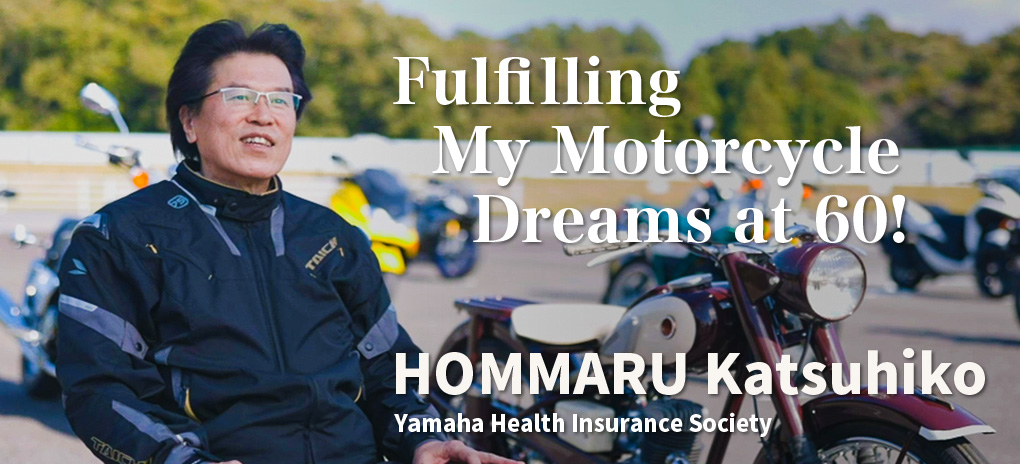

I’ll actually reach retirement age at the end of this month, so I really wanted to join this event and ride at Fukuroi Test Course to “celebrate.” The first bike I rode was the original 1,200cc Vmax. It first went on sale when I was in college and I always lusted after it. My current ride is its successor, the 1,700cc VMAX, so I was really excited that the day finally came for me to try riding the machine that started it all. It felt lighter than I expected and was surprisingly rider-friendly in general. I also got to ride the YA-1, a bike I’d always enjoyed seeing at the Plaza, and several other bikes I’d always dreamed of. It was a fantastic day for me as I was able to make many of my riding dreams come true. It’s great that the Plaza works to maintain these historic machines that were first built more than 50 years ago in running condition, and I’m sure that work will contribute in the future to the Monozukuri culture at Yamaha and provide added motivation for sales. I also think sharing the fact that we conduct activities like these with our customers is a great way to create more Yamaha fans.
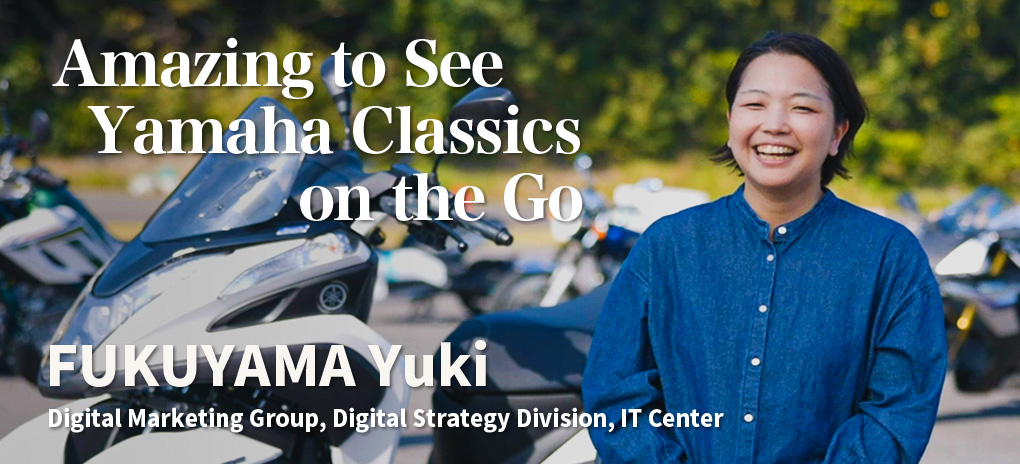

I came all the way from Yokohama for this event. I love motorcycles, but life has prevented me from riding for the last few years, so I was really looking forward to today. The first bike I rode was the SR400, a bike that was discontinued just when I was thinking to buy one someday. It was friendly and comfortable to ride, so even though I haven’t ridden for a while, I was able to get back into it without worry. After that I rode the Tricity 155. I was really surprised because it didn’t feel at all like it had three wheels and it rode just like a normal motorcycle. Even if you don’t have much confidence in your riding abilities, there’s a certain peace of mind you get when riding it and that quality really stood out for me. Both the SR400 and Tricity 155 have traits that belong to them alone and that makes them uniquely Yamaha. Until today I’d only ever seen these historic machines at the Communication Plaza or on the website, so there was this unexpected Kando from actually seeing them running. I’m truly grateful for the tireless efforts of the restoration team that keeps these historically significant machines in running condition, and I hope many other Yamaha employees also get a chance to try them!
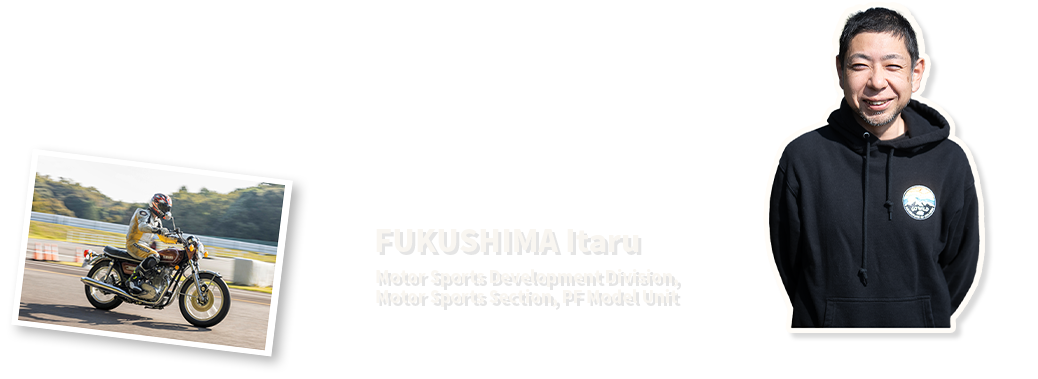

Because I currently ride a MT-07, I wanted to compare it with the TX650, which is also a parallel twin. The TX’s soft pulse at low rpm felt so good that I wanted to just leave the place and go touring on it! I also rode the YDS-1 and it didn’t have any strange quirks either. It felt like the ride character and quality that makes a Yamaha has remained basically the same today as it was back in the past.
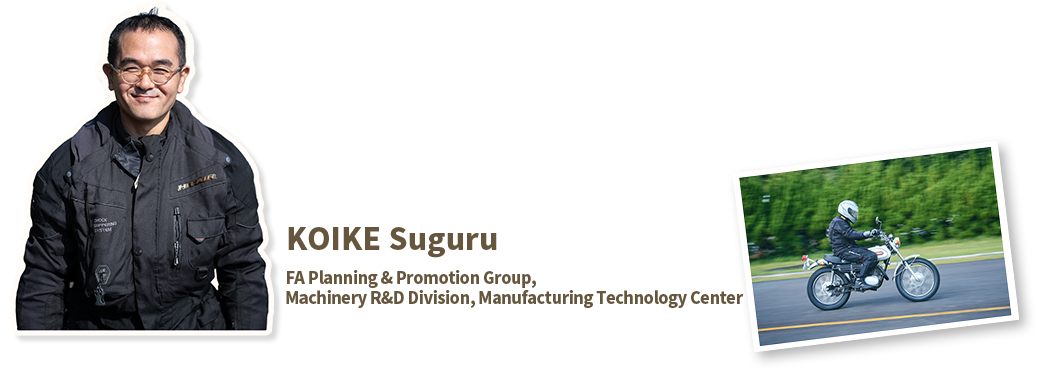

I loved that characteristic 2-stroke power hit that came when reaching high rpm on the DT-1. Its upright riding position and general feel while riding had some parallels with my TW200E. To be able to experience these wonderful Yamaha products at this event really is a special perk of being an employee. I hope we keep this event going and I’d love to help out in some way too.
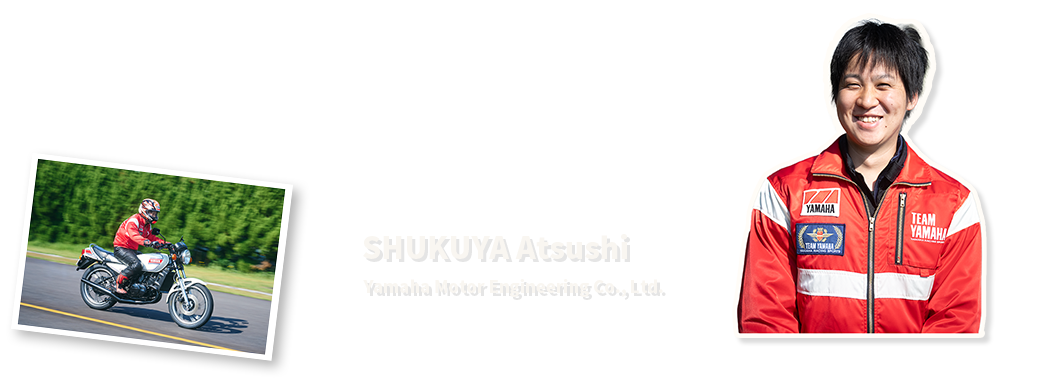

I rode the RZ250, one of the first liquid-cooled 2-stroke sportbikes and a beautiful machine I’ve always yearned for. I’m not sure I got to experience its full powerband on this short course, but that 2-stroke smell and its unmistakable ‘80s aura was so nice. I also rode the Passol, a bike I rode as a teenager, which really took me back!
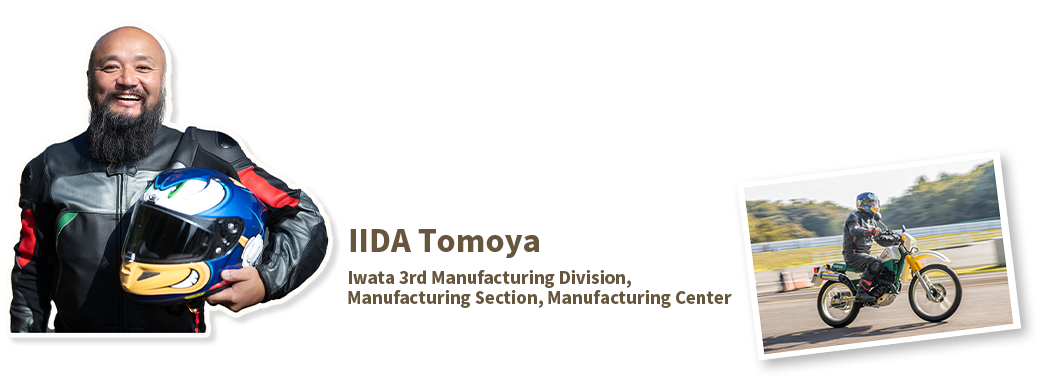

Because I own a Serow 250 and Serow 225, I wanted to attend this event and compare mine with restored older and newer models. They both were in good condition, running, braking, and handling well, so I had a fun time trying them out. This is, of course, thanks to the excellent restoration and maintenance work the CP team does. The event was a wonderful experience and I’m very grateful to the staff members.
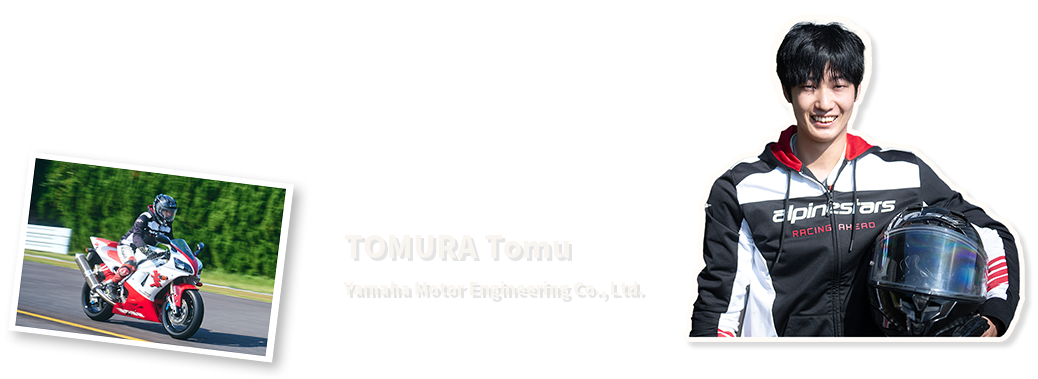

I have a 2009 YZF-R1 and I wanted to compare it to an earlier model without the crossplane engine. I was a bit confused at first because the steering was so light, but I soon got used to it and was able to run it down the straights and through the corners with no problems. I also rode the RZ250 and was surprised at how light and nimble it was! It’s a bike that urges you to rev it to high rpm!


I got to try riding two of Yamaha’s most iconic bikes, the TMAX and Vmax. The TMAX has a smooth and powerful engine, while the handling feels like the chassis is glued to the road surface. Compared to the earlier unit-swing types of scooters, its ride quality is in another dimension. With the Vmax, I fully enjoyed its awesome spread of power. I had so much fun that the day was over before I knew it!
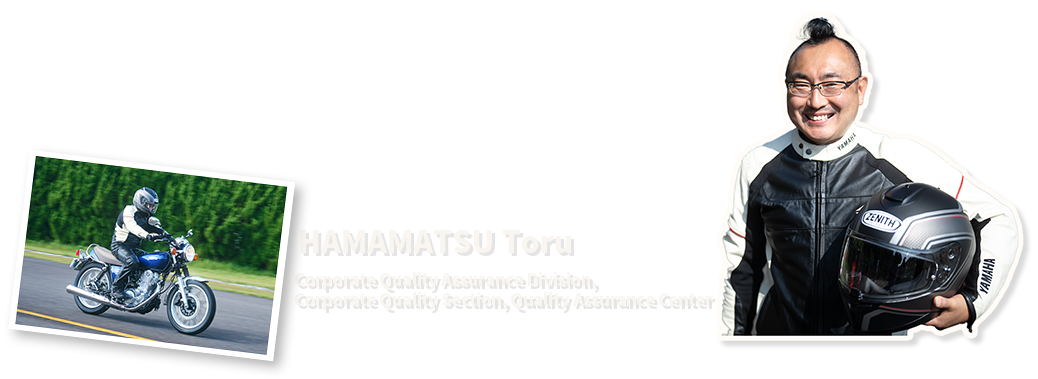

I’ve been riding for 45 years, so I really enjoyed seeing so many cool, old-school bikes today. Until two years ago, I was working on developing accessories and bodywork kits for Y’s Gear, so I rode the Serow 250 and SR400. I was always fond of these two bikes and I was glad to see that both of them had the same ride quality they had when they were new. I hope Yamaha continues to restore and preserve these historic machines.


Since joining Yamaha, I’ve been involved in new product development and R&D for motorcycles, and I was in charge of the test riding and handling stability development for the YZF-R1. To be able to ride this bike on the same track we used back in the day was a very emotional experience for me. The bike’s character and defining characteristics were unmistakable and I felt so much Kando from how thorough the restoration team has been in keeping it in such fantastic condition.
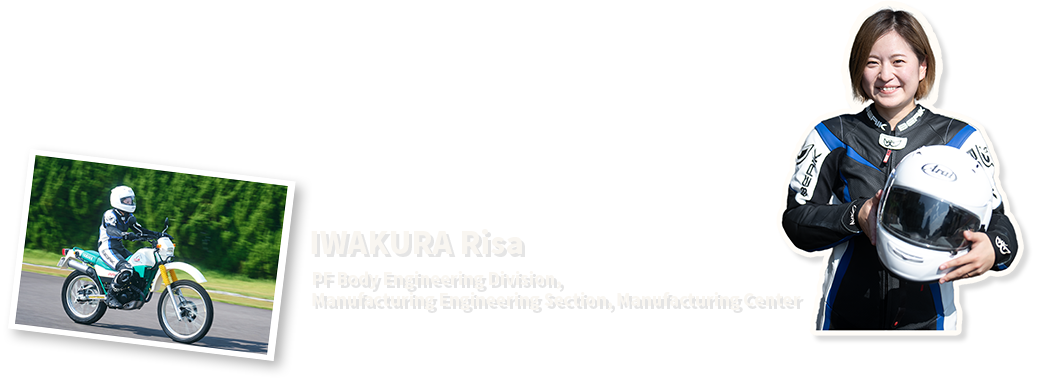

I rode the Serow 225, successor to the Serow 250 I own. Its handling was just as responsive and rider-friendly, reminding me once again why our motorcycles have their reputation for Yamaha Handling. This is such a great event because it not only ensures these historic motorcycles are restored and kept in running condition but it also lets employees like us get a chance to ride them. I hope more people within the company learn of the event and the splendid work the restoration team does.


I’ve participated in the Historic Model Demonstration Run twice before and they were so much fun that I again applied to be a volunteer rider. The DT-1 I rode today was so perfectly restored that it was hard to believe it was built more than 50 years ago. As a Yamaha Motor employee and as a Yamaha fan, I can’t express how happy I am that these historic machines are maintained in running condition!